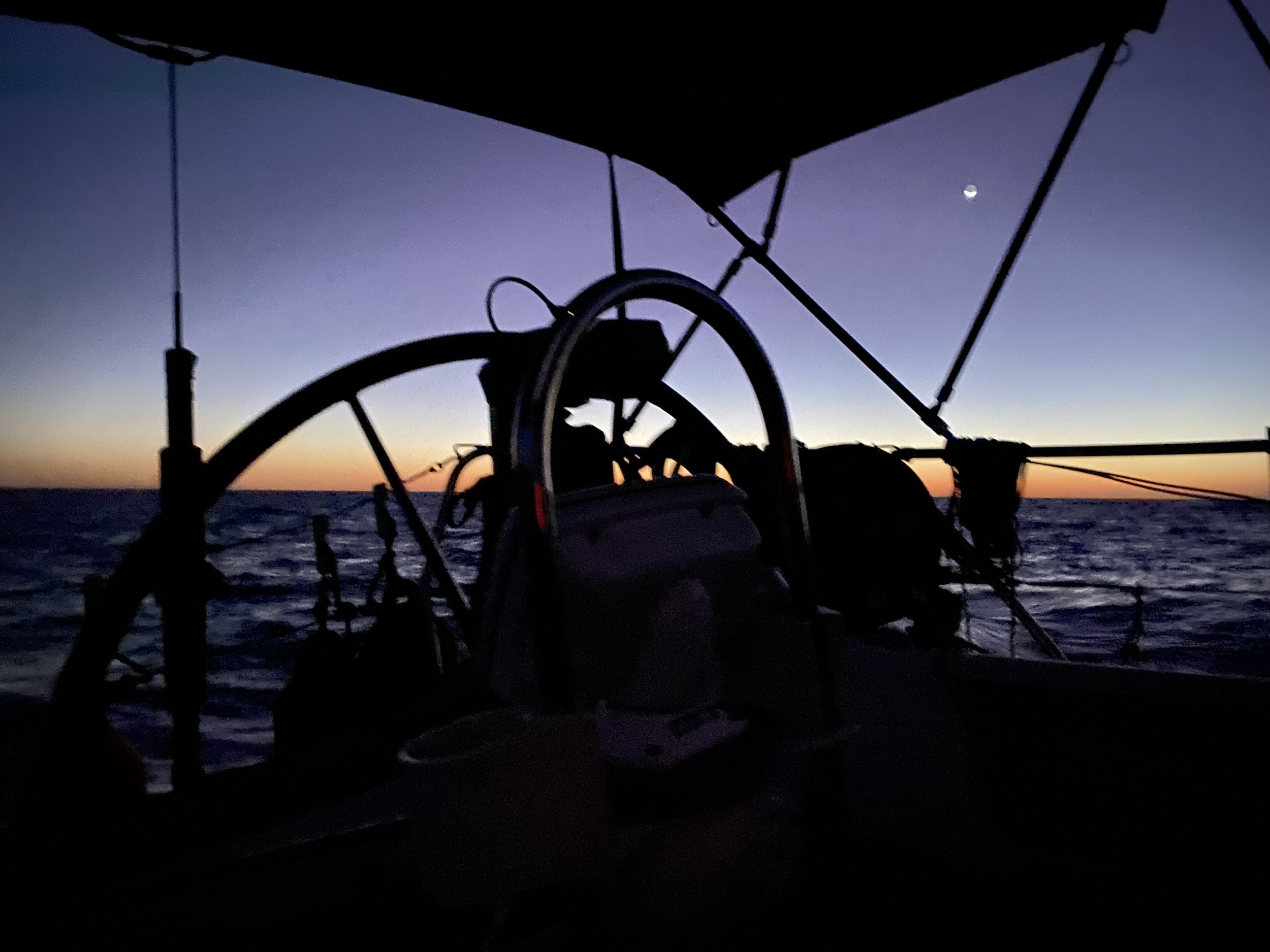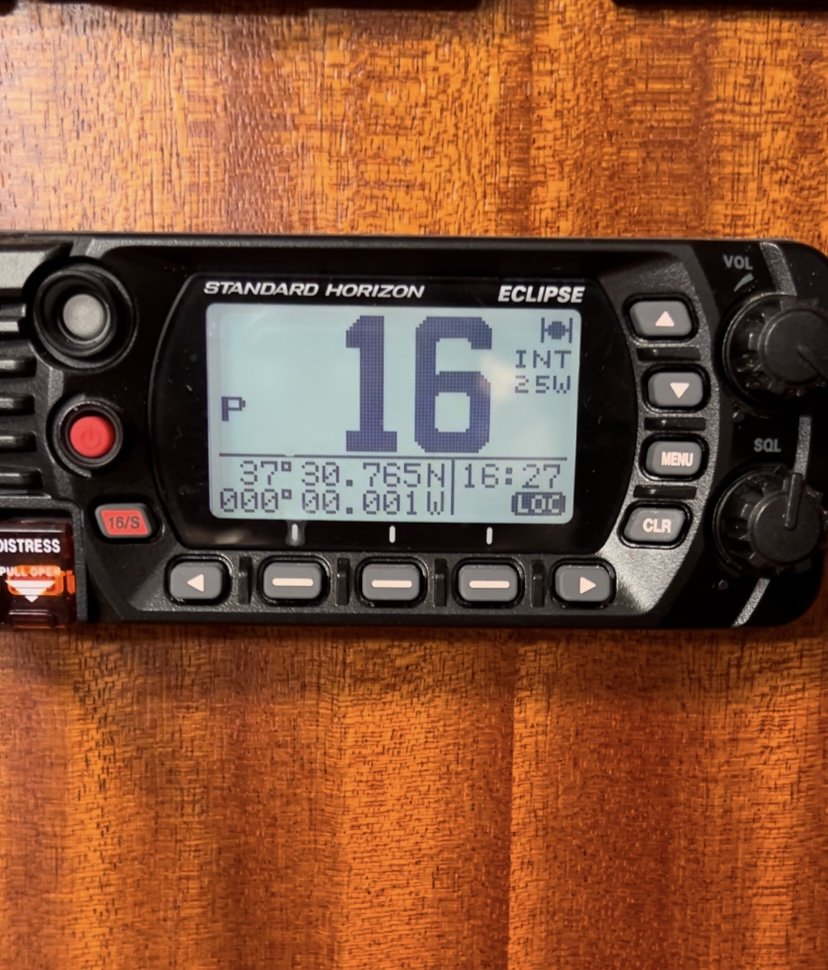From the Balearics to Cartagena
After taking Peter's cousin Daniel to the bus, we wait for a thunderstorm to pass and then leave the marina again. We spend the night in the bay of Sa Ràpita again due to a lack of good wind. The next day, Peter and I sail alone on our boat for the first time despite owning it for two years. We head for Port d'Andratx in sporty but pleasant conditions. The entrance to the harbor is impressive. Between rocky cliffs, which are unfortunately completely coverd with buildings, we enter the well-protected harbor. Here we want hide out from the strong south-westerly wind for the next few days. Port d'Andratx welcomes us mainly with snobbish Germans. You rarely hear Majorquin or Spanish. We make use of the existing infrastructure, do some laundry and eat tapas together in the evening.
The next day we head to Palma again. I have an appointment at the eye clinic and in the afternoon we pick up our good friend Romana. Together we get everything ready to spend a few days remotely on Formentera. We go for a run around the villa district, stock up on food, clean the boat and do more laundry. The next day, in order to have more time on Formentera, we sail to Ibiza in rough conditions - upwind and against 1.5-2m waves. Romana is seasick for almost 10 hours and only fully recovers after spending the night in the anchorage. As the wind gets stronger and stronger during the night, it is not particularly restful. Before we continue our journey, we all jump into the water again - we haven't even set foot on Ibiza, but we don't want to miss out on swimming.
We sail a leisurely downwind course to Formentera. Romana steers a lot and is reassured that she won't get seasick again straight away. After 4.5 hours, we arrive in the north-west of the island. It resembles a party bay - on Saturday evenings, there seem to be a lot of motorboats and party catamarans coming here from Ibiza. No wonder, given the white sandy beach and turquoise blue water. However, the bay empties out by sunset and we have a very calm night with little wind and waves. The weather forecast and our tight schedule to the Canary Islands, which is made even tighter by a problem with our antifouling, leave us only one day on Formentera. We therefore set off early the next morning to explore the northern tip of the island. The exploration tour quickly turns into a garbage collection tour, as we can't simply walk past all the plastic waste without doing anything. Once again, we end up finding garbage of all different kinds, from fishing nets to flip-flops. Completely unperturbed, most of the tourists simply walk past calmly, looking at us strangely with our garbage. We just ask ourselves, is this already so normal that people don't even notice it anymore?
In the afternoon we go for another swim and stow things for our crossing to Cartagena. This is our last anchorage for a long time and we also have to say goodbye to island life for a while. Just in time for sunset, we weigh anchor and set sail. At first, we set sail away from Formentera at a very leisurely pace until we are heading south at 6-7 knots. Despite this, the conditions are calm with around 15 knots of wind and few waves. We take turns with the watch shifts - one of us sleeps for about three hours while the other two stay awake in the cockpit. There's not much to do, but we enjoy the silence and admire the beautiful clear starry sky. It is almost new moon, there is hardly any light pollution and not a cloud in the sky. The stars are twinkling, the Milky Way is clearly visible and each of us sees a few shooting stars.
As the sun rises, the sky slowly lights up in picturesque shades of red, purple and blue. After a hearty breakfast, we set about optimizing our sail setup. The wind is coming from behind, but the waves are coming from the side, causing our sails to collapse again and again. We work out how to adjust our gennaker (a light wind sail made of very light fabric like a paraglider) with the help of our spinnaker pole so that the sail stands up better. We attach several lines to both the sail and the spinnaker pole, tensioning the spinnaker pole forwards, backwards and upwards. Leave one line looser, tighten the other and see if we can achieve the desired effect. After 2 hours of adjusting, we finally found the best solution. However, we only hold this course for three quarters of an hour before we have to jibe and everything changes again, rendering our construction obsolete. At least we were busy. The new course is much more pleasant. We no longer need the spinnaker pole because the wave now comes from behind and the boat no longer rocks to one side.
It's really comfortable and yet we're still fast and speeding towards Cartagena at 6 knots (when the wave pushes us even briefly at 8 knots). It goes perfectly and we even play several rounds of UNO in the cockpit because the boat glides so smoothly through the water. In the late afternoon, we pass the Greenwich meridian and the coordinates on our radio jump from 000° 00.001 east to west. Cheers to that! We don't normally drink alcohol during crossings, but you have to celebrate moments like this if the conditions allow it.
At sunset we can see the Spanish mainland coast ahead of us, but it's still a long way to Cartagena. We stow away the gennaker (our light wind sail) because, as predicted, the wind is dying. We start the engine and also lower the mainsail, as the wave is coming from the side and it is beating loudly from left to right. As we are due to arrive in Cartagena earlier than expected - at 3 a.m. - we call the marina, but unfortunately nobody picks up the phone even though it should be available 24 hours a day. The trip at night is a little uncomfortable due to the rocking of the waves, but otherwise not exciting.
At 1 a.m. Peter notices that there is water on the floor and so I am woken up rather rudely. Peter and Romana immediately wipe everything up from the floor and the kitchen cabinet. The bilge pump does the rest. Luckily it's only fresh water - half our water tank, around 80 liters of water, has leaked out. It's a familiar problem, because a connection to our drinking water tap sometimes comes loose. We want to make a new connection in Almerimar at the latest.
We arrive in the bay of Cartagena at around 3 o'clock. We drop anchor in a small bay and go to bed tired. We sleep half the morning and all jump into the crystal-clear water again after “breakfast”. Then we take a leisurely drive to the marina 15 minutes away.
Our crossing from Formentera to Cartagena in numbers:
Distance: 161 nautical miles, of which under sail: 140 nautical miles
Time: 1 day 8 hours 12 minutes
Average speed: 5.1 knots
Number of sunsets seen: 2
Crossing of the Greenwich meridian: 30.09.2024 16:27
Special events: ~80 liters of drinking water in the bilge
We spend another day exploring Cartagena with Romana before she sets off on her journey home. We also meet two new sailing friends (Tim and Heli from Moana) who we first met on Mallorca. This time we have more time to chat and catch up, so Cartagena is the start of a good friendship. Otherwise, we explore the city, shop at the market, attend a concert in a bar, eat tapas and enjoy city life to the full.






























